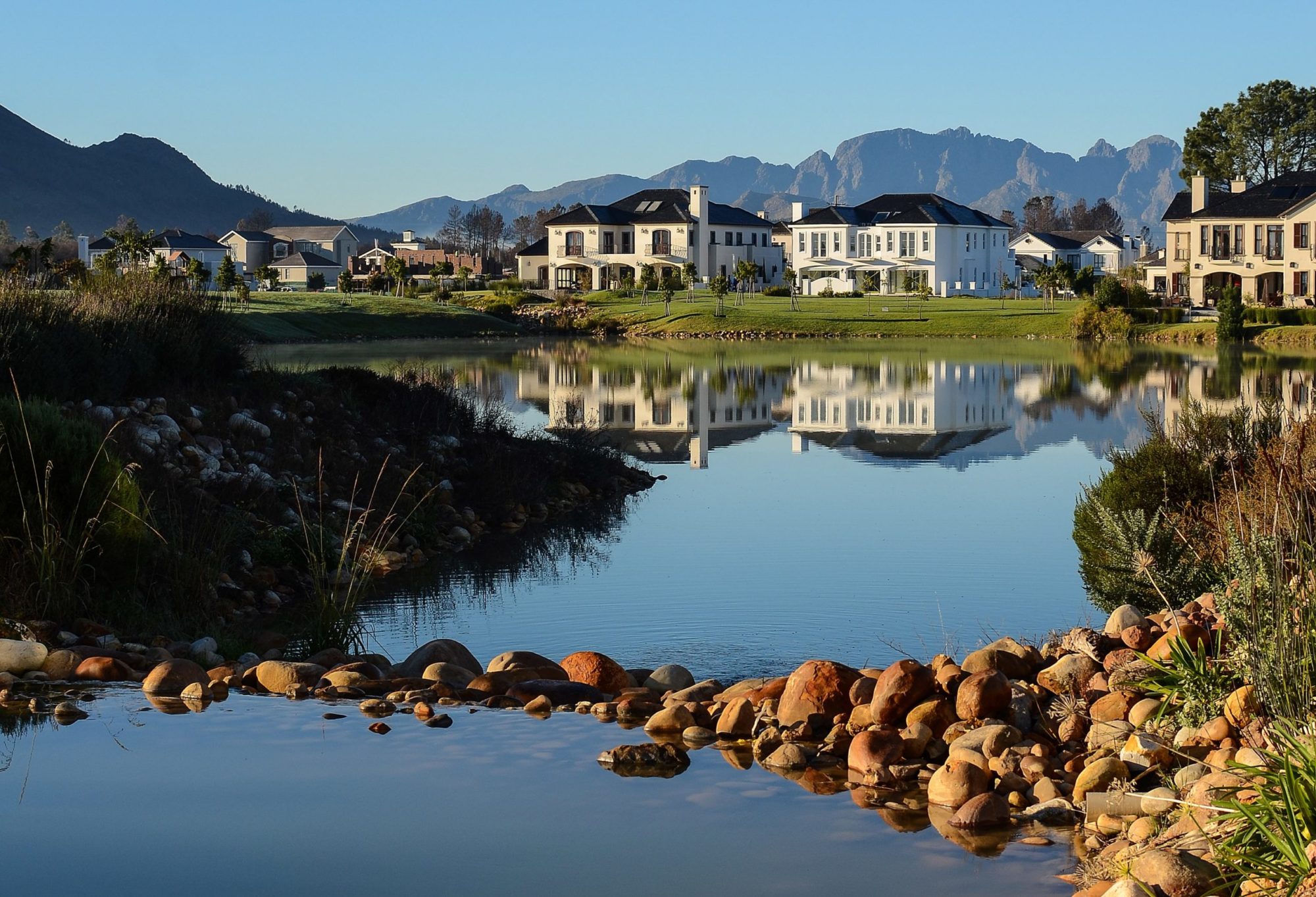Advertisement
Two words define modern lifestyles – mobility and flexibility. Building a contemporary home or home office, therefore, has become all about embracing these freedoms, in design elements and materials chosen.
The global work-from-home trend means that modern homes, in particular, are multifunctional environments where people can work, eat, relax and play. “Homeowners spend more time at home, often working from home, so they need spaces that are well proportioned and easily adaptable, with a considered balance between interior and exterior,” says Karlien Thomashoff, architect at Thomashoff Studio in Pretoria.
Thomashoff is currently working in tandem with Saint-Gobain South Africa, specialising in sustainable habitat solutions. They are contracted in the construction of a novel show home called Stand 51 that, when finished, should epitomise this building evolution. Being built on Val de Vie Estate in the Paarl-Franschhoek Valley, Stand 51 is designed and constructed using energy-efficient materials where the top objectives are health, comfort, safety, flexibility and environmental protection.
Acoustic environment
Creating an ideal acoustic environment is key, especially in workspaces, says Michelle Cerruti, residential and hotel sector manager at Saint-Gobain Construction Products. “The impact of acoustics on our overall mood and wellbeing is profound. Sound insulation contributes to a sense of security and privacy,” she says.
Homes can be made significantly quieter by the choice of materials for walls, ceilings and doors, and among the sound-absorbing materials used to achieve this are special plasterboards, acoustic ceilings and mineral wools used for insulation.
Lighting
Lighting is equally important, especially in workplaces, considering that a World Green Building Council study found that productivity increases by 18% in the presence of daylight. “In buildings, access to natural light, fresh air and outside views has been shown to make people feel more energetic and inspired. This typically results in higher test scores at school, better productivity at work and faster healing times in hospitals,” says Cerruti.
Glass, window films or architectural membranes are used to optimise natural lighting, while wall coverings, ceilings or flooring can contribute to the distribution of daylight and to the aesthetic of a space.
Advertisement
Materials
Materials such as glass, plasterboards, mineral wools and External Thermal Insulation Composite Systems (ETICS) serve to moderate indoor temperatures, meanwhile, and help to keep the air fresh inside the building, which in its design should give consideration to solar heat gain through the overall building shape, orientation, number and size of windows and the ability of surfaces to reflect heat, says Cerruti.
“Buildings that are designed and built better, with materials that optimise comfort, are often energy efficient as well. This will save energy costs over the lifetime of the building or home,” she says.
This visionary approach to building is proving to be a strong drawcard for buyers who work from home, and they are prepared to invest accordingly, judging by feedback to a questionnaire sent to 30 000 respondents and available on the Stand 51 website. Saint-Gobain’s survey showed that nearly 90% of potential buyers prefer to work from home, and 84% believe a home office is a valuable investment. Acoustic and thermal comfort was important to 91% of respondents, who said they want their home to be quiet, day and night, as well as consistently warm and cool all year round.
Flexibility
Flexible spaces are also important, where an office can convert into a living space and vice versa, as this ensures optimal use of smaller homes. In other words, the modern building is expected to perform well beyond being a shelter. It needs to service today’s lifestyle.
Why buyers choose better buildings
The Val de Vie Estate is a good example of world-class modern living. This means comfortable, multifunctional, energy-efficient homes in which every square metre is optimised based on external views and the environment, with state-of-the-art technology maintaining security and offering high-speed internet connectivity.
Part of a World Heritage Site located in the Paarl-Franschhoek Valley in the Western Cape, Val de Vie Estate is a 532 plot ‘super estate’, a primary residence estate that boasts leafy, wide-open spaces, world-class polo fields, Rhône-style vineyards, a modern pre-school, and stunning French Provençal and Cape Colonial architecture.
The homes on the estate meet an increasing desire for a ‘lock-up-and-go’ lifestyle. “Our resident demographics are evenly split between those commuting to Gauteng, those working from home, people working in Paarl, Wellington, or Stellenbosch, those working in the northern suburbs (Durbanville/Bellville) and retired couples or swallows,” says Ryk Neethling, marketing director of Val de Vie.
The estate has a vast range of lifestyle offerings and outdoor activites that cater to a diverse group of homeowners who enjoy more than 2km of Berg River frontage.
The vineyards on the estate produce internationally acclaimed wines, while the polo fields host several international tournaments each year. A new hotel, the plush Pearl Valley by Mantis, opened on Val de Vie in August, comprising 38 beautiful rooms with breathtaking views of the mountains and valleys.
Val de Vie Estate consistently produces impressive sales figures that speak for themselves.
Investment value is another high priority. “Our residents and buyers are discerning and come to us because they want the best an estate has to offer, and they want homes that perform the best and which will be excellent investments in the long term,” says Neethling.





